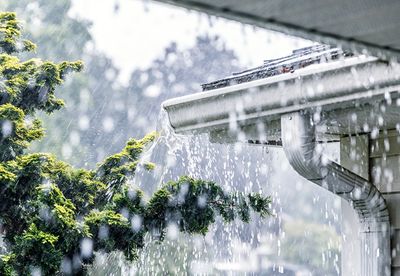Forensic Meteorology: How Do Consulting Meteorologists Help with Damage Claims and Disputes?
Claims Journal2025
Professional meteorology, as it relates to insurance claims handling and the litigation process, is becoming increasingly recognized, and the employment of meteorologists within the insurance industry is growing. But what does meteorology have to do with storm damage insurance claims?
View more
Viewpoint: The Financial Toll of Unforseen Weather Events
Claims Journal2024
Large insurance losses are increasingly being caused by hazardous weather events such as hurricanes, floods, lightning strikes, high winds, large hail, and wildfires. Furthermore, adverse weather is not only causing loss incidents to occur, but also making the repair process of certain projects longer and more expensive by hampering supply chains and prolonging the time for repair contractors to access loss locations.
View more
Severe Convective Storms and Associated Insurance Weather Risks
JD Supra2024
Severe convective storms (SCSs) occur during all seasons in the United States. According to Aon,[1] severe convective storms have accounted for 70% of global insurance losses in recent years, and there continues to be a rise in such losses, largely due to growing exposure. In the US state of Texas alone, between January 1, 2012, and January 1, 2024, large hail originating from severe convective storms occurred an average of 197 days per year—more than in any other state. There was also an average of 49 days per year of at least one reported tornado, where Texas also stands as the leader, with 176 days on average of reported thunderstorm wind damage.
View more
Weather Hazards & Insurance Claims Considerations Across the US
JD Supra2024
Every day, somewhere in the United States, some sort of hazardous weather is occurring. The vastness of the nation—from the Arctic Ocean coastline to the tropical beaches of the Florida Keys, to the mountain peaks of the Western United States, to the volcanos in Hawaii, the inhospitable deserts of the Southwest to the eastern shores of the Great Lakes—covers diverse climates and geographical weather patterns. In turn, the weather experienced across different portions of the United States drives local economies (such as agriculture, fishing, shipping), cultures (such as clothing, day-to-day activities, employment, hobbies, and interests), and politics (largely based on culture and economy).
View more
2024 Hurricane Season Predictions and Considerations
JD Supra2024
A much-anticipated time of year across the Atlantic coastline of North America and the Caribbean is hurricane season, which officially begins on June 1st and ends November 30th. Similarly, the east Pacific hurricane season begins on May 15th and ends November 30th. During this time, tropical cyclones are most prone for development in low-latitude waters where sea-surface temperatures are warm and overall wind shear is low.
View more
Solar Farm Hail Damage: The Perfect Storm
JD Supra2024
Hail the size of golf balls, softballs, and even grapefruit has always made weather news. Each spring and early summer, local weather stations and people across the United States share photos and videos on social media of hail, along with measurements, comparisons, and the damages sustained to their property. So, how has hail news become a hot topic in the insurance industry, specifically as it relates to solar farms?
View more
The Financial Toll of Unforeseen Weather Events
JD Supra2024
Large insurance losses are increasingly being caused by hazardous weather events such as hurricanes, floods, lightning strikes, high winds, large hail, and wildfires. Furthermore, adverse weather is not only causing loss incidents to occur, but also making the repair process of certain projects longer and more expensive by hampering supply chains and prolonging the time for repair contractors to access loss locations.
View more
Derecho, Downburst, or Bow Echo? Thunderstorm Wind Events Explained
JD Supra2023
During the first half of 2023 alone, there were over 7,000 reports of severe-caliber thunderstorm winds or associated damage, according to the National Weather Service’s Storm Prediction Center. These wind events are generally characterized as straight-line winds. Some are isolated and short-lived, while others are not. But what’s the difference?
View more
Meteorologist Suggests What Not to Do Ahead of and During Tropical Cyclones
JD Supra2023
Hurricane season is once again upon the North Atlantic basin, and coastal communities will potentially undergo a considerable test of emergency procedures when preparing for and responding to an approaching tropical cyclone. Even with a perfectly polished emergency action plan combined with a high-confidence weather forecast, communities must still face a highly variable and unpredictable element: public response.
View more
Weather Reports & Insurance Claims: Finding a Trustworthy Source
JD Supra2023
Storm reports are one of the most utilized tools in forensic storm damage assessments for insurance claims and litigation following a weather event. These reports are generally published by the National Weather Service and can be found in both preliminary format at the Storm Prediction Center’s website (among other, third-party sites), as well as in the National Oceanic and Atmospheric Administration’s (NOAA) Storm Events Database.
View more




